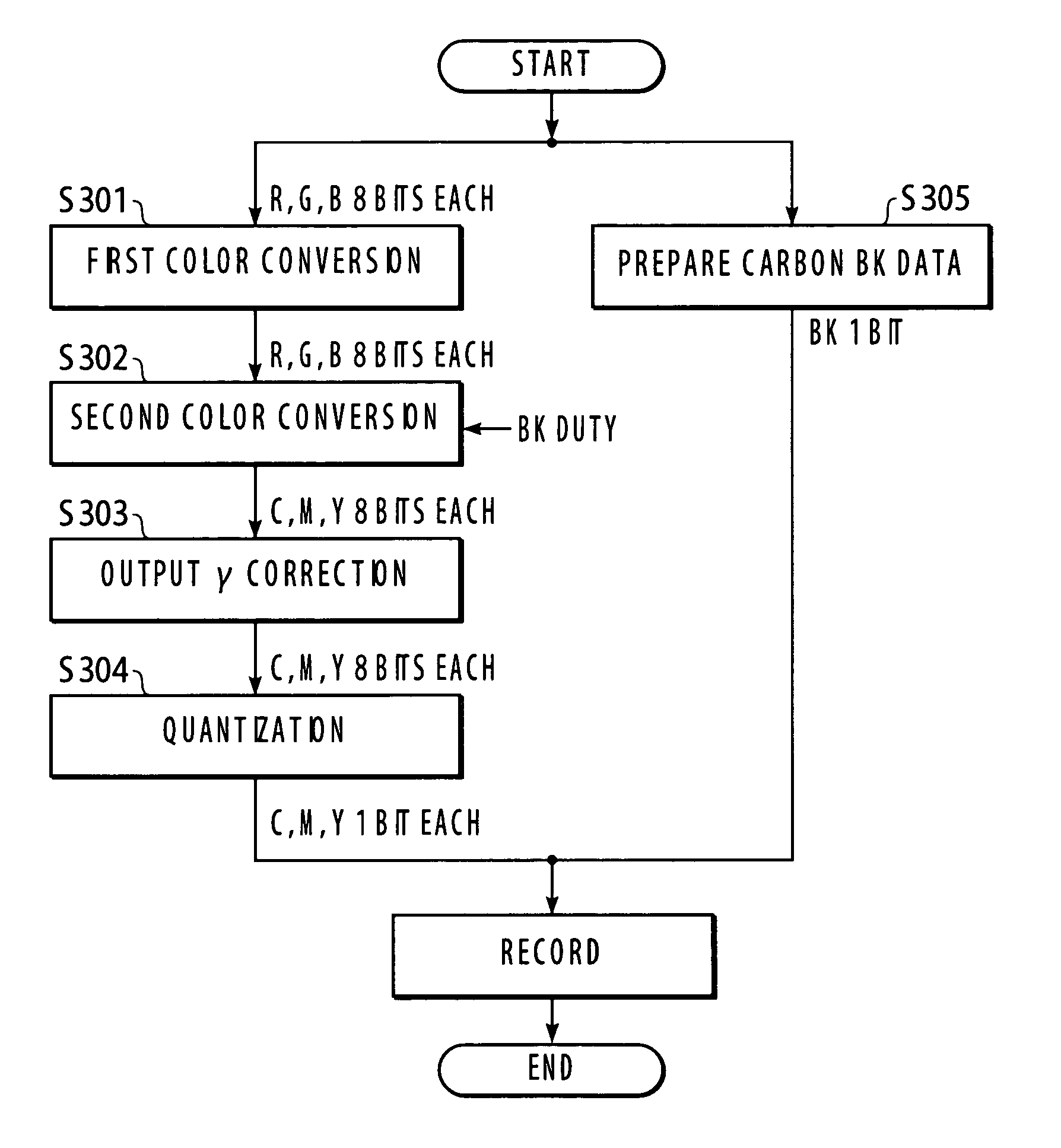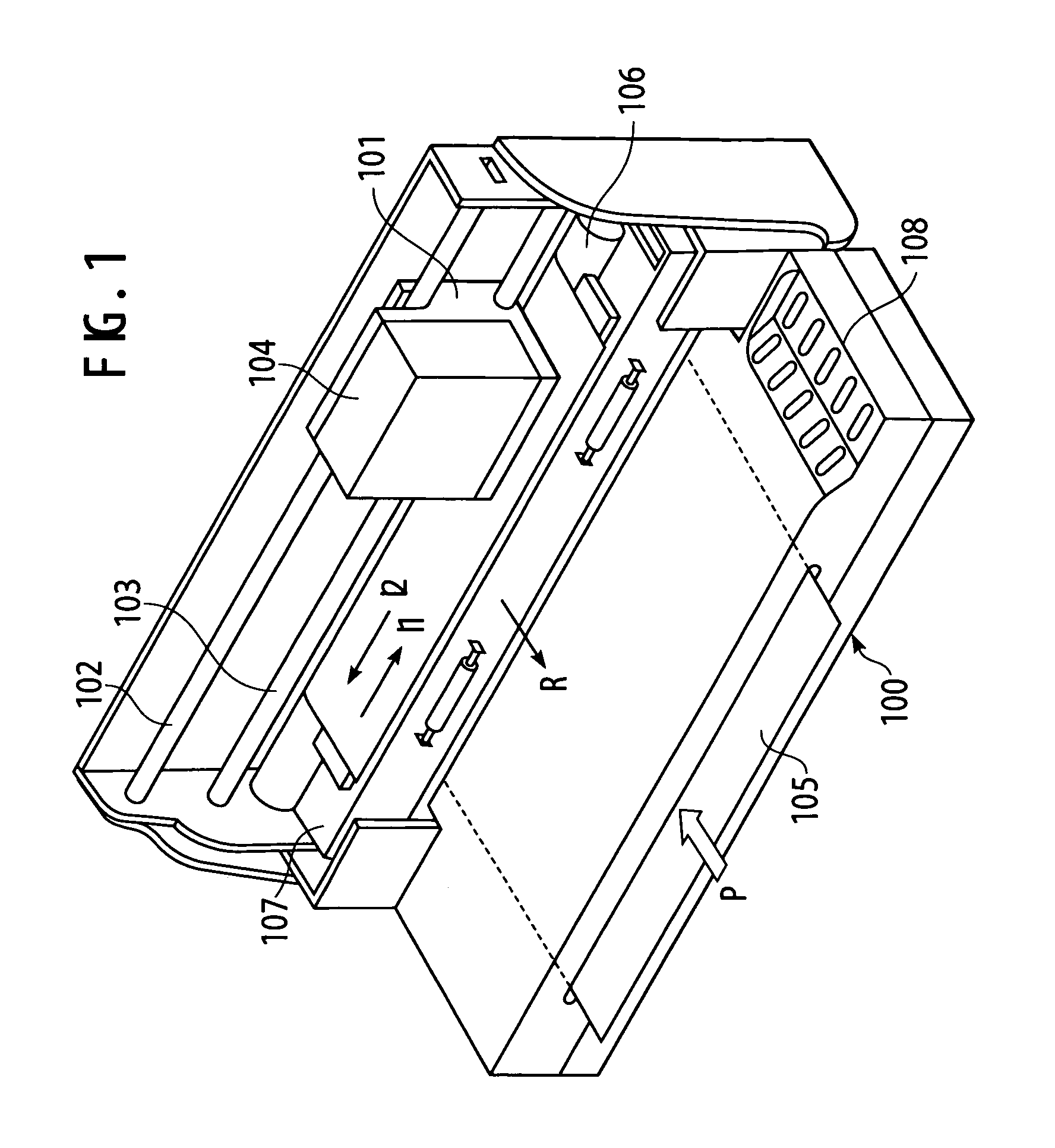Method for recording image corresponding to positional information on recording medium and recording method
a technology of position information and recording medium, which is applied in the direction of visual presentation using printers, digitally marking record carriers, instruments, etc., can solve the problems of preventing the reading of positional information, affecting the recording quality of images, and inability to arbitrarily record positional information on recording mediums
- Summary
- Abstract
- Description
- Claims
- Application Information
AI Technical Summary
Benefits of technology
Problems solved by technology
Method used
Image
Examples
first embodiment
[0025] In the first embodiment, the present invention will be described using an ink jet recording apparatus, which discharges ink onto a recording medium. FIG. 1 shows the structure of the ink jet recording apparatus of the present invention.
[0026] A recording medium 105 is fed in the direction designated by arrow P from a feeding position in the front of an ink jet recording apparatus (printer, in the first embodiment) 100. The feed direction of the recording medium 105 is reversed at the back of the recording apparatus 100, and the recording medium 105 is delivered in a secondary scanning direction, designated by arrow R, to a recordable area of a recording head 104, by a delivery roller 106. Under the recording medium 105 in the recordable area, a platen 107 is disposed. A carriage 101 shifts in primary scanning directions, designated by arrows I1 and I2, along guide axes 102 and 103, and thus reciprocally scans the scan area including the recordable area by driving a stepping m...
second embodiment
[0056] The embodiment above, the C, M, and Y color inks are used as a carbon-free ink, but it is not limited to these. In addition to the Y, M, and C dye inks, a black dye ink, but not containing carbon may be used to record ordinary images. Hence, five colors including the carbon Bk ink are used in total.
[0057] FIG. 8 is a flow chart of preparation of Bk1 data of the carbon Bk ink, Bk2 data of the black dye ink, and the Y, M, and C data of the respective color dye inks, and it is similar to FIG. 5.
[0058] Substantial difference from the foregoing embodiment is in the second color conversion in Step S402. A LUT used for the color conversion in the second embodiment prepares C, M, Y, and Bk2 data from the inputted R, G, and B data. The Bk2 data is generally prepared by undercolor removal (UCR). In the second embodiment, however, reference to the Bk1 data is made during preparation of the C, M, Y, and Bk2 data, and UCR is performed in different way from usual. Recording components of t...
PUM
 Login to View More
Login to View More Abstract
Description
Claims
Application Information
 Login to View More
Login to View More - R&D
- Intellectual Property
- Life Sciences
- Materials
- Tech Scout
- Unparalleled Data Quality
- Higher Quality Content
- 60% Fewer Hallucinations
Browse by: Latest US Patents, China's latest patents, Technical Efficacy Thesaurus, Application Domain, Technology Topic, Popular Technical Reports.
© 2025 PatSnap. All rights reserved.Legal|Privacy policy|Modern Slavery Act Transparency Statement|Sitemap|About US| Contact US: help@patsnap.com



